Jo Ledingham can be seen most nights sitting on her patio chair on a beach on the cusp of Belcarra Regional Park, a cup of tea and book in hand, looking out over the body of salt water known as Indian Arm. A great grey slab of Coast Mountain bedrock spreads out into the ocean in front of her. From her seat, which looks westward, she can spot the expanding suburbs of North Vancouver across a short stretch of ocean, and the peak of Mount Seymour.
“Somebody should put a little bronze statue of her there in the future,” said her daughter Andrea Ledingham. “She is there so much of the time, it’s an iconic Belcarra thing.”
Jo isn’t one of 750,000 visitors that pour in and out of Belcarra Park each year. She lives there. She has for nearly 50 years — since before Belcarra was a protected area. Jo lives in a cabin and Andrea lives in the cabin next door. The Ledinghams have been on this patch of shoreline, now known as Belcarra South, off and on since 1964. Both their homes are nearly 100 years old. Out of the seven cabins in Belcarra South that run above two small pocket beaches, three still have outhouses, and Jo and Andrea rely on woodstoves for heat.
For most of their time in Belcarra South, Jo and Andrea have lived with the knowledge that they could be forced to leave at any time. Since 1971, when the land they live on was expropriated, they and the other cabin-dwellers have paid rent to the regional governing body currently known as Metro Vancouver. Yet, since the 1970s, Metro Vancouver has also created multiple park plans that would banish the cabin dwellers. Twice they have issued an official “Notice to Terminate” — an eviction order. The latest, which came down on March 14, 2018, may finally do the trick.
Metro Vancouver director Mike Redpath said this summer they are working on new park plans that will open every inch of Belcarra to the public. The notice to terminate initially stated that the residents would need to be out by November of last year. But Jo, Andrea and the four other tenants appealed and remain in arbitration. Still, most believe they are on borrowed time.
To many observers, the situation is easily reduced to a small group of people trying to hang on to a romantic and privileged lifestyle. Residents pay fees of $3,200 each month for all the cabins combined, a minimal price for waterfront in one of the world’s most expensive real estate markets, noted Redpath.
Yet it’s also a story about the power of place, our changing relationships to the places we live and the gradual loss of unique communities like Belcarra South to a tidal wave of modern development. It’s a story about the harm that inevitably follows when attachment to place is forcefully broken.
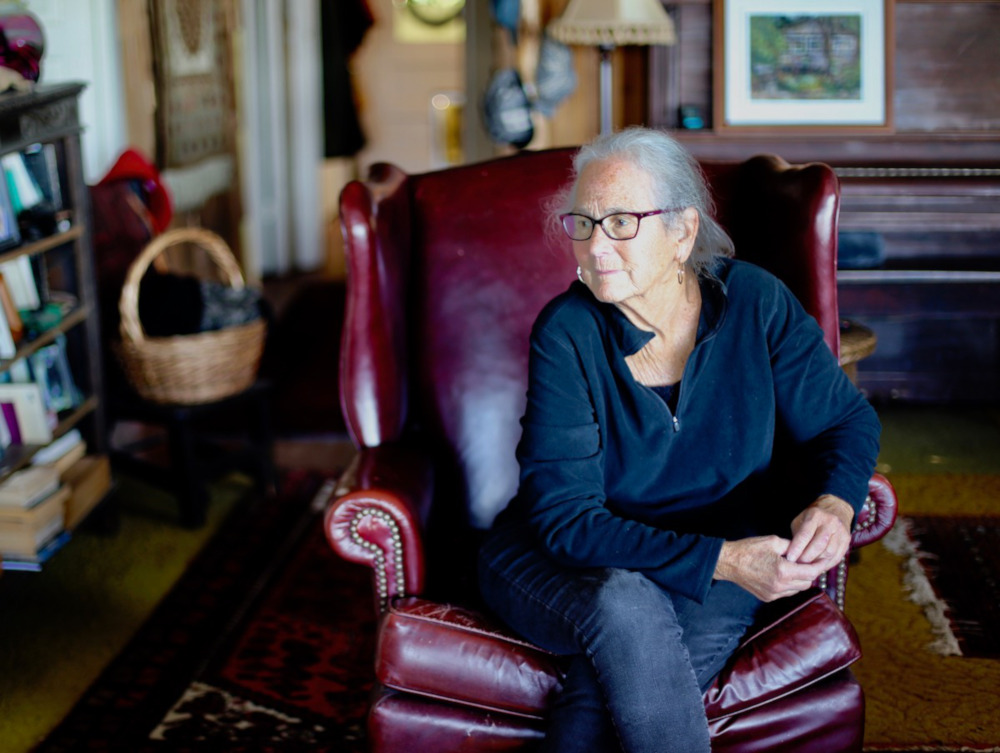
It isn’t easy to find Jo Ledingham’s cabin. It isn’t even easy to find Belcarra Park, which sits at the end of a maze of suburban roads in Port Moody, itself tucked away in a cove between Burnaby Mountain, the Coast Range and a long inlet of the Pacific Ocean. Each of the heritage cottages of Belcarra sprouting from the forested waterfront has a name: Mayo Point Lodge, Bay Cottage and Annex, Wee Cottage, Wellwood, The Skeleton, La Soledad and Los Lobos. At the very end is the Bole House — the largest of the buildings — which is boarded up and unoccupied. None of the residents know where the names came from; they were written on little signs on the cabins long before they moved in.
The inside floor and walls of Mayo Point Lodge are made of cedar and fir in classic tongue-and-groove style, with large sash windows that look out on Indian Arm. Dozens of potted plants line the window sills. The cabin hasn’t changed much since 1964, when Jo and her husband brought their daughters Andrea and Shelley — who were two and four — to Belcarra South one rainy November day. The family was living in Vancouver, and Jo was weary of urban life. The cabins they found were mostly unused and derelict. “I walked around the house and down to the water and I just said, ‘I want to live here,’” Jo recalled.
She didn’t know it at the time, but the area had been occupied for centuries by the Tsleil-Waututh Nation. Belcarra Regional Park sits on the Belcarra Peninsula, and that piece of land is the site of the ancestral village called Tum-tumay-whueton, which has been translated as “lots of land” and “the biggest place for all the people.”
“That was one of their core village sites, if not their most important village site. You’re looking at the centre of their territory, with a network of other villages around,” said Indigenous anthropologist Jesse Morin, who has done extensive research on and for the Tsleil-Waututh Nation.
In the 1860s, smallpox and tuberculosis devastated the Tsleil-Waututh, plummeting the population from 1,000 to seventeen, according to Morin. Because of the disease, the remaining Tsleil-Waututh eventually moved from Tum-tumay-whueton to join other Tsleil-Waututh in what would become the 250-acre Burrard Reserve, near Deep Cove, B.C. But the nation still considers Belcarra their homeland. “They conduct ceremonies and rituals there and honour their ancestors there. It’s an exceedingly important place for Tsleil-Waututh,” said Morin. “As much as they went away, they never left it. It wasn’t an abandonment. It was a relocation.”
John Hall, a trail builder and hand logger, became one of the first non-Indigenous settlers on the Belcarra Peninsula, in 1870. According to historian Ralph Drew, Hall was permitted to register a claim on the land provided that he live there, cultivate it and make improvements. Hall’s property included what is now Belcarra South and he married a Tsleil-Waututh woman — possibly to consolidate his claim. In 1882, Hall was charged with killing his Tsleil-Waututh mother-in-law, Mary Dish, and was sentenced to seven years in prison for manslaughter. Unable to pay his lawyer, William Bole, Hall instead gave him his property. It was Bole who named the area Belcarra, after the town in County Mayo, Ireland, where he was born. Bole later became a judge, and over the years he, his wife Florence and their son Percy acquired more land in the region. Eventually, 142 acres made up the Bole Estate.
The builders of the seven cabins on the estate remain a mystery, but heritage experts such as historian and author Michael Kluckner estimate that they date to the 1920s and ’30s. For years, Jo and her family rented one of the cabins during summers. In addition to the Belcarra South cabins, there were then around 24 other cottages spread throughout the property, some inhabited by artists and U.S. draft dodgers. But permanent residences, with proper plumbing and running water, began to sprout in the 1970s. Ultimately, the only remnant of cabin life lay with the Belcarra South community.
By 1975, the Greater Vancouver Regional District, forerunner to Metro Vancouver, had announced it would demolish the remaining cottages. The tenants formed the Belcarra South Historical Preservation Society — which still exists today — and negotiated leases with the GVRD that year. For a time, the residents felt relatively secure. Then, in 1985, the GVRD unveiled its first park plan that showed no cottages.
“You can imagine how upsetting that was to us who were living here,” said Jo.
The residents have lived under a cloud of uncertainty ever since, driving some from the park. But the few that hung on have hung on tightly, appealing each threatened eviction and managing to stay a little longer every time.
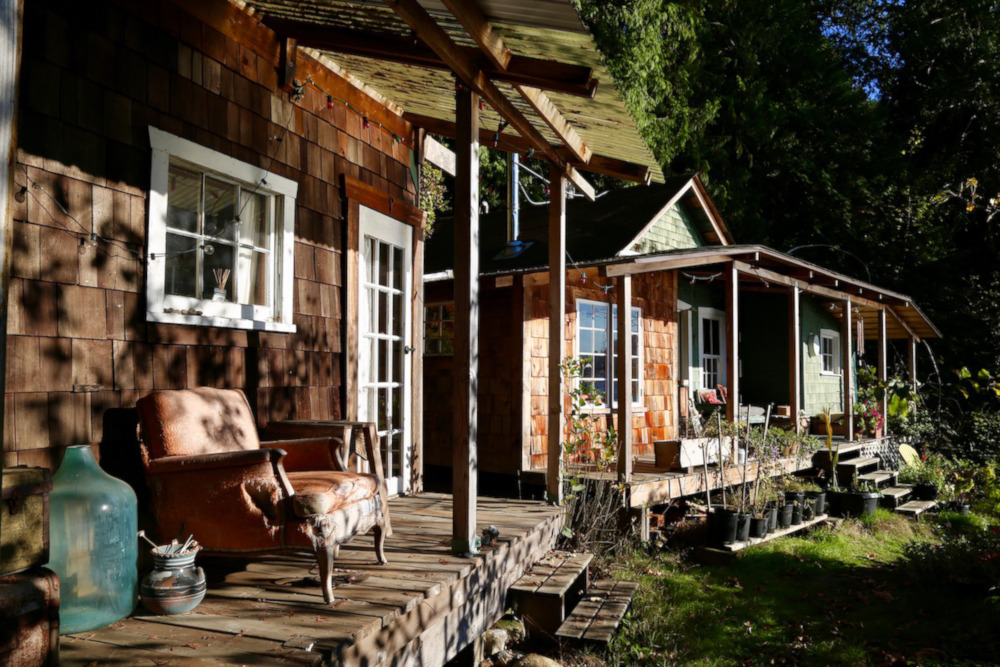
Metro Vancouver’s current design proposal for Belcarra South includes four new parking lots, picnic tables, possible washroom facilities and trails — including a waterfront path that would run straight past the current cabins.
Metro Vancouver is discussing with the Tsleil-Waututh the possibility of displaying educational material about the nation, as well as Indigenous artifacts from the region, said Metro Vancouver Parks chair John McEwen.
“Our parks,” said McEwen, “are meant to be open spaces to be enjoyed by all Vancouver residents.”
In that view he has an ally in the historian Ralph Drew. Next door to Belcarra South is the incorporated Village of Belcarra. Drew used to be its mayor, and he is ready to see the cabin dwellers go. “The residents of the cottages have had it very sweet for decades,” he said. “Quite frankly the time has come where the public needs to realize the value of their investment in the park plan. And these people are denying that access.”
This time, Metro Vancouver will win once and for all, predicted Redpath. The seven cabins will be “static landscape displays,” meaning they will be restored but will not be open to public use and will be unoccupied.
Jo said she is heartbroken about where the process seems to be leading. “I look at real-estate ads every day for about an hour. And I’m so depressed and so demoralized after it.”
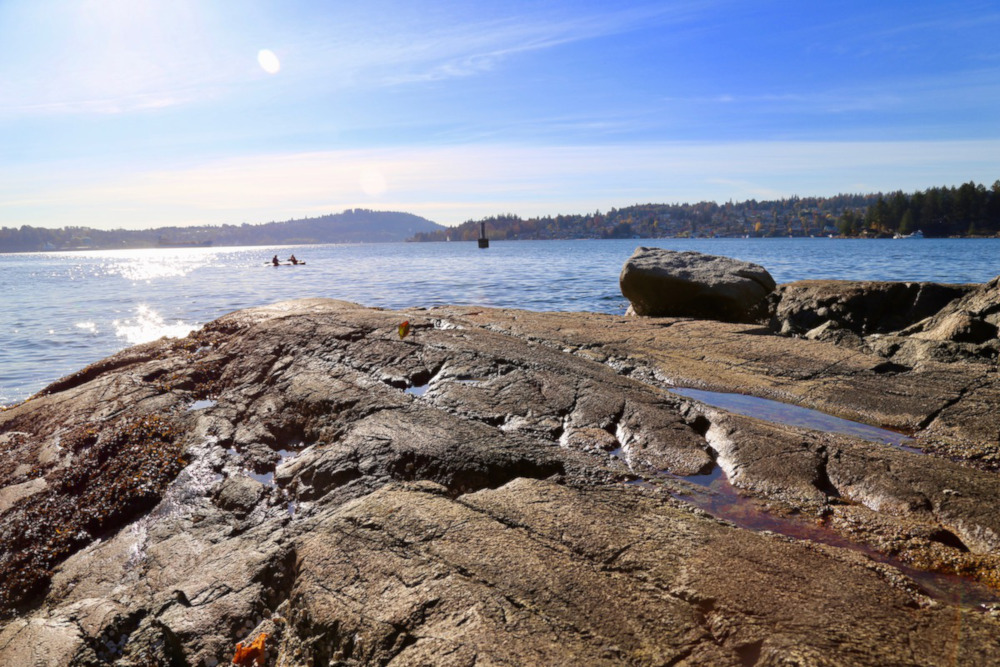
The main argument the Belcarra South Historical Preservation Society has maintained in their fight to remain in the park is that they function as unofficial caretakers, dealing humanely with bears, helping to regulate overfishing and illegal crabbing, cleaning up litter. “Families will have picnics,” Andrea said, “and literally leave everything behind.”
In private, the residents make a case for their continued residency that they feel the wider world would not accept: that they are emotionally attached to the place they live in a way that is different from the steady stream of stories about renters evicted to make way for one or another new condo development.
They also believe the essence of their community has value not only to the residents, but to all of society.
In the 1970s, a discipline called “place studies” emerged as a school of environmental psychology committed to exploring the relationship between people and place. Since then, an important question for place-studies scholars has been the difference between residing in a place and “dwelling.” German philosopher Martin Heidegger suggested that human existence is inseparable from connection to place, and that we build things to live in because we are dwellers by nature. Dwelling, he said, is being.
Yet in order to truly dwell in a place, people need to form an emotional connection with it. That in turn depends on factors such as how long they live there, their immersion in its history and knowledge of the landscape, the memories they accumulate and their involvement with the community and their neighbours. Scholars have found that residents of traditional dwelling places like small towns or villages have the highest level of “place attachment,” most likely because of their direct participation in the upkeep and culture of where they live. One quality of place attachment is a tendency to defend the place against harm.
The Ledinghams have dwelled. After her marriage ended in 1978, Jo moved to Belcarra South full time. She would never look back.
“When my kids were small, they were clambering over those rocks and falling and scraping themselves on barnacles and eventually running on the rocks. Just like little wild things. They grew up, they had children, and I watched my grandchildren discovering those rocks, falling on those rocks, playing on those rocks. How many people these days get to witness another whole generation exploring the bush, learning to row a boat, learning to swim, learning to dive off the same place that their children did? It’s almost unheard of,” Jo said.
Andrea spent summers in Belcarra South until she was 16. “When I was a child, we really felt like we were far away from everything. We didn’t feel at all like people were encroaching upon this area or that it was a growing, expanding, developing place. It was just off the end of the planet,” she said.
When her parents divorced, Andrea spent time with her father in Vancouver. In 2005, she felt compelled to return to Belcarra, moving into The Skeleton — 480 square feet in size — with her five-year old daughter Leilani.
Today, Andrea lives in the Bay Cottage alone. It’s another tongue-and-groove cabin, with that musty old cabin smell. Her home is filled with Crosby, Stills & Nash records, birdwatching books, an old-fashioned bathtub and a large mural of a killer whale. The front door is made of glass and faces the waterfront.
“I’m crazy about the ocean,” she said. “It’s so far under my skin. I just can’t imagine being away from it. I’m just really grateful for every day that I’m here.”
How would it feel if she was finally made to leave?
“Like my heart was being ripped out of my body.”
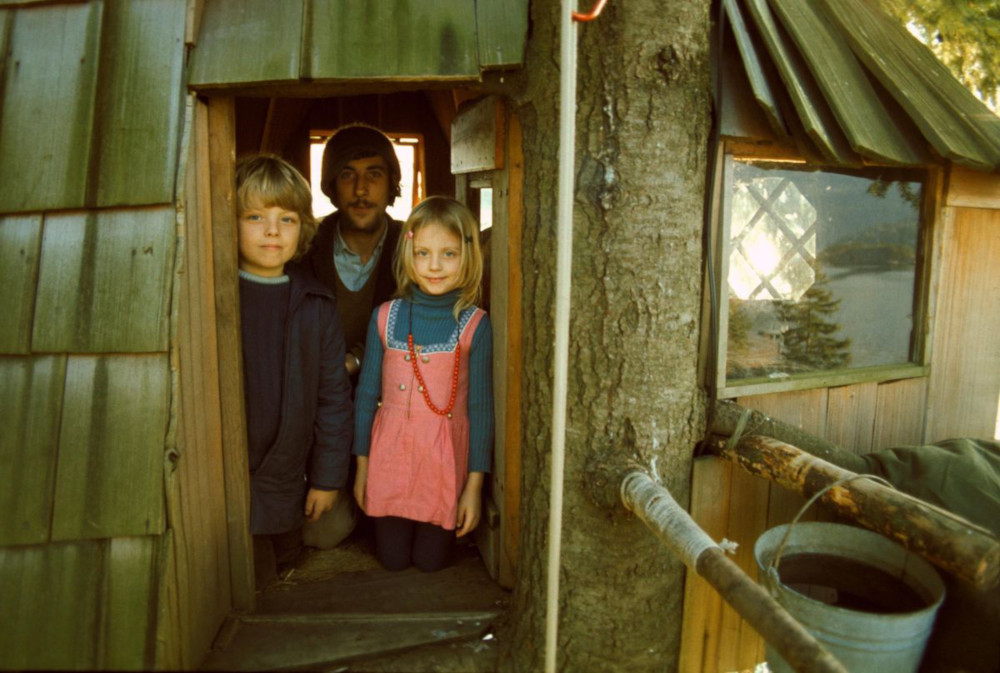
In 1972, at the age of 17, George Dyson was working on a boat that was travelling up Indian Arm when one of his crew mates saw the Bole House looking out over the beach, and mentioned he knew people living there.
“We dropped anchor and went in. I remember walking in that room and the sun was shining, they had music on the stereo, and it was — it was just magical,” Dyson said.
Dyson decided to stay in Belcarra South and built a temporary home for himself. Ninety feet up, perched between the branches of a massive Douglas fir, Dyson’s treehouse had a wood stove, a cot and a small desk. He pulled supplies up by rope and was pestered endlessly by squirrels.
“I’d always wanted to live in a treehouse,” said Dyson. The view and all the sunlight the house let in during the winter were wonderful.
To this day, fragments of the treehouse hold on to the Douglas fir — pieces of Dyson’s legacy that don’t give up easily. But after three winters in the tree, Dyson moved into the Bole House.
Dyson, who is now an author and historian of technology, said when he became a father, he tired of worrying about being evicted. “When I moved, that was the reason.”
Dyson relocated to Bellingham, Washington, in 1989, where he would open a sea kayak business. But he considers Belcarra South to be an instrumental part of his life — it’s the place where he became a man, where he built some of his first kayaks, and where he wrote his first book, Baidarka, now considered a classic of kayaking literature. Dyson fondly recalls the health food store run by Bole House residents, the two home births that took place in the house, the area’s yoga group, the old dance hall that used to stand in the park.
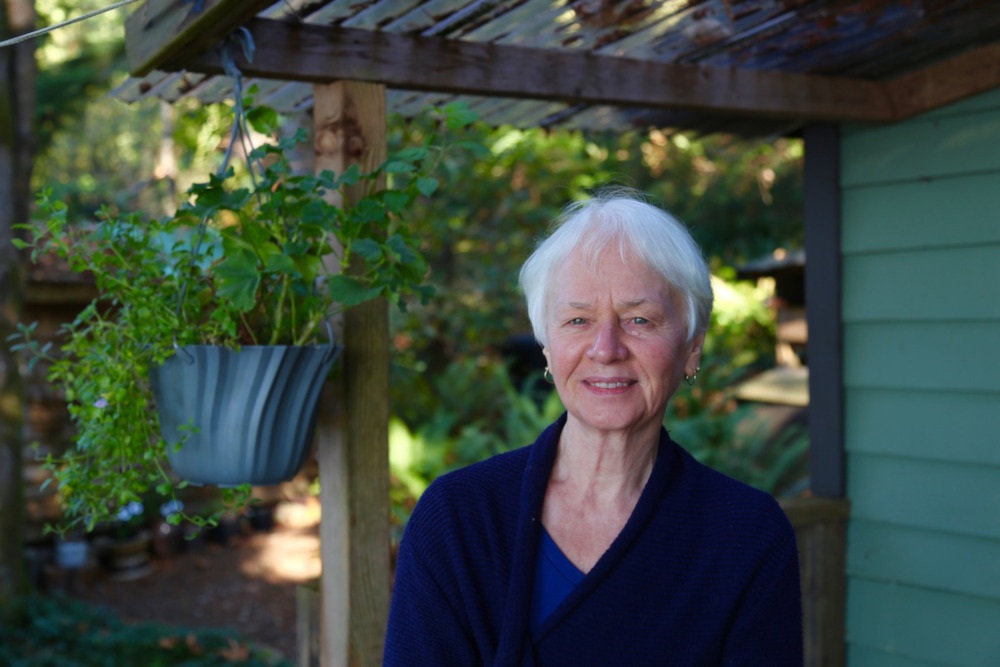
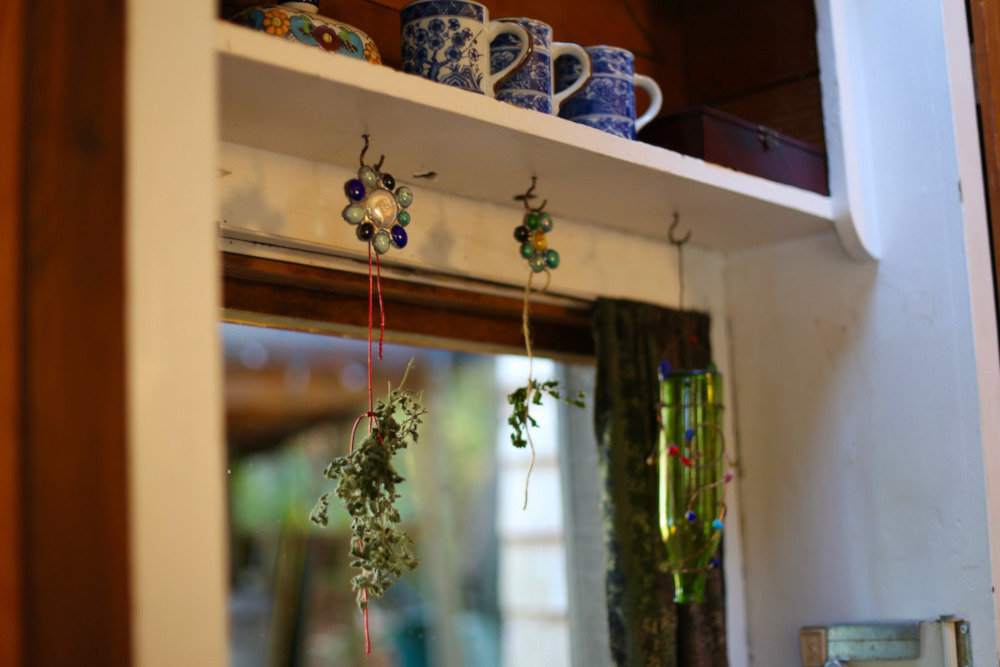
Cathy Elson remembers the community’s early days as well. She has been living in the Los Lobos cabin since 2005, but first moved to Belcarra South in October 1971. She was 21 then, and living with her husband Richard and 13-month-old son Jaime in the Wellwood cabin — one of the smallest of the seven cabins.
“We were kind of hippies,” said Cathy.
The young family would spend most of their summers in the Kootenay region, sometimes on a commune, and once even living in a school bus. That’s when Cathy gave birth to her second son, Michael. In those days, Cathy and Richard only had one car, so Cathy spent most of her time in the park while Richard was working at Simon Fraser University in nearby Burnaby. “It was very secluded. And very lonely, in a sense, for me,” said Cathy.
At the time, the Bole House was a communal living space, and Cathy’s family spent a lot of time there. Artists, authors and drifters would show up, forming a melting pot of people who preferred barebones living to life in the city. “It was kind of an Ashram environment, people coming and going from all over the place. That’s when our marriage started to break up. It wasn’t very stable. We were very young.”
Cathy moved away with Michael in 1975, and Jaime stayed in Belcarra South with his father. Michael returned in the 1980s and Jaime kept living in the park off and on, even after Richard died in 1994. When Cathy came back in 2005 to be near her grandchildren, she found that life in the park was just as special, if not more so, than she had remembered. “It’s about being close to nature. It’s been like living the Walden experience for me,” she said.
Cathy’s son Michael lives in the cabin next to hers. When she thinks about being made to leave, she wonders where she might end up. “I really can’t see that there’s anything available except for a basement suite, or a rundown apartment.”
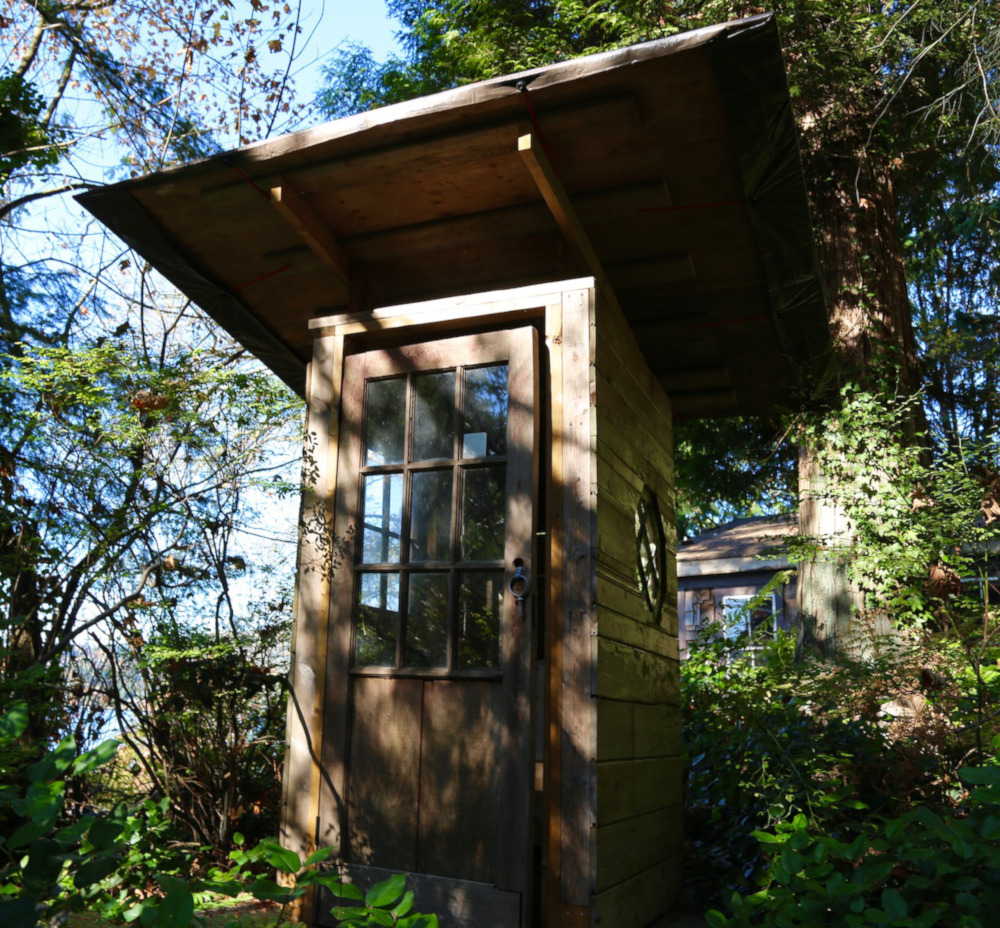
For as long as Belcarra South has existed as a community, critics have attached little value to the fact that it was a place where life was lived differently. A 1975 article in a local newspaper, The Herald, quotes then Coquitlam mayor Jim Tonn saying Belcarra’s cabin dwellers “want to have a nice regional park but nobody but themselves to enjoy it. You can’t have a Utopia.”
Scholars who research place point to a growing “sameness” — in many cities it is hard to tell where you are because there is a Starbucks on nearly every corner, corporate chains instead of mom and pop businesses, and architecturally similar high-rises everywhere you go. Edward Relph, a Canadian geographer, argues that this standardization of landscape comes from an insensitivity to the significance of place. The popularity of visiting or seasonally living in rural and natural spaces is on the rise due to urban sprawl. But researchers do not believe part-timers form as powerful an emotional attachment or contribute to local communities as fully as the locals.
Place-studies scholars like Relph and Marc Augé, author of Non-Places, say that true places, due to the strength and duration of our relationships with them, are laden with meaning and shaped by a broader history. A typical condo development, by contrast, rarely develops much emotional meaning or cultural significance. Because of globalization, the rising pace of daily life, mobility and gentrification, some thinkers have suggested that deeply rooted place attachment may be an “irretrievable Eden” — a thing of the past.
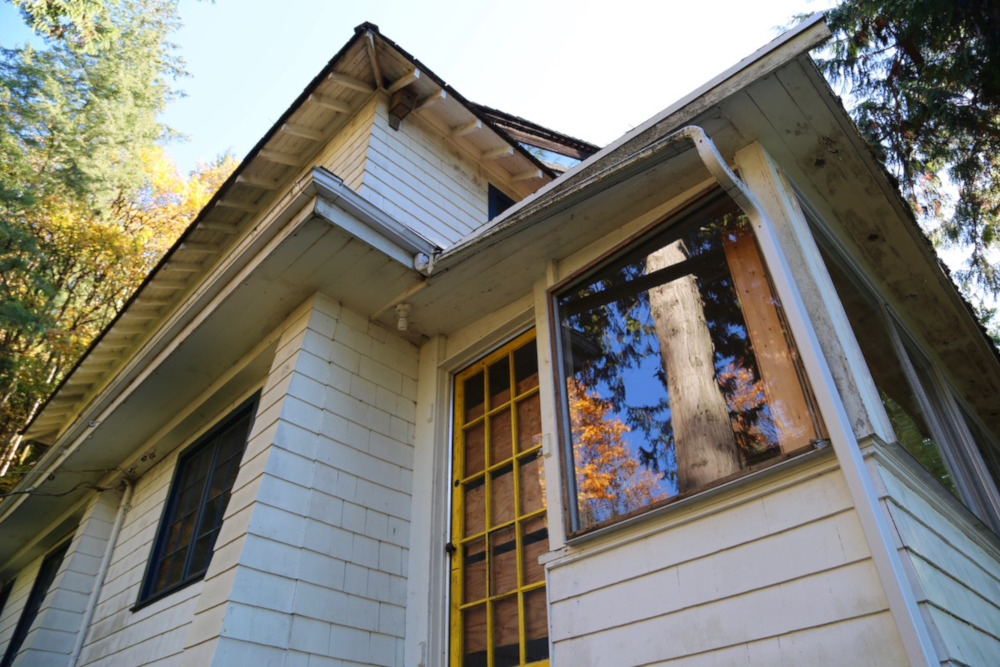
George Dyson would like to see Belcarra South preserved as a unique heritage community. At the very least, he said, the remaining residents deserve to live out their days in the place they have called home since before it was a park.
“It’s true that the people living there have no special right to live there. But as a greater provincial or national thing, there is some value in preserving a living human community,” he said.
“To kill it off is inexcusable. You can always turn it into a parking lot later. But if you turn it into a parking lot now, you will never get that community back.”
When people with firm place attachment are forced to relocate, they have strong emotional and physiological reactions. Mindy Thompson Fullilove, a professor of urban policy and health at The New School in New York, co-authored a 2011 study that examined the “stages of disruption” in 20 families representing 18 countries and six different types of displacement. In every case, these families had to leave their “homeplace” and create new ones. They were forced to “remake their emotional connections” and their place attachment, often suffering financial loss in the process as they often had to leave jobs. They also had to pull their kids out of their schools, and their ties with family and friends were weakened after they moved.
Fullilove uses the term “root shock” to describe the disorientation and pain that can come with being forced to make a drastic change in one’s “emotional ecosystem.” Other research on people undergoing eviction from places they are attached to has found high levels of psychological and financial distress, coping difficulties, post-traumatic symptoms and loss of “the sense of belonging and mastery.”
The length of time required for re-adjustment and the potential for long-term effects such as alienation and depression vary from person to person. But some are never able to make this transition. For Belcarra South residents, particularly the older ones, eviction could be traumatic.
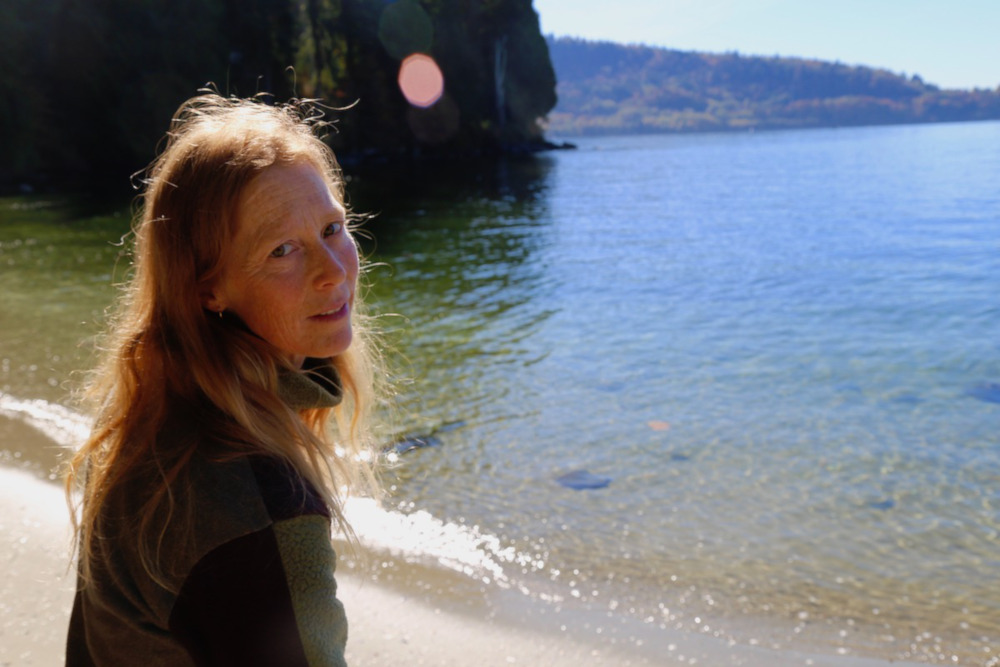
Belcarra Regional Park was much different when Jaime Elson was growing up — quieter, with fewer people visiting the park. Nearly every night, when Jaime’s father Richard came home from his job, the two of them would go down to the water below their little green cabin and fly-fish.
But by the time Jaime was a teenager, in 1987, he was excited to move away for university. He was itching to travel and live in a city. The oldest of Cathy and Richard’s two sons, he had spent his whole life living in a cabin. “I remember being teased quite often in high school. The fact that I had an outhouse was a very unusual thing,” Jaime said.
Jaime studied to become a teacher himself, and then, early in their marriage, with his wife Holly he moved back to Belcarra South. They had their three children there, eventually settling into the Bole House. Even at two and three years old, the children would fish off the beach. Just like their dad. Just like their grandpa.
Belcarra South looked different to Jaime through adult eyes. “I realized how special it was.”
But in 2012, the stress of being torn between loving a place yet knowing you could be forced out at any time caused Jaime and his family to move away. Since their departure, the Bole House has been empty and boarded up. Jaime said he had hoped Metro Vancouver would turn it into an outdoor school or nature education centre.
Jaime said his heart remains in Belcarra South. He and Holly harbour a deep regret for having had to move. “It’s kind of like when you leave a relationship that is not quite finished.”
Some Sundays, though, three generations of Elsons can be spotted on the beach on Indian Arm. Jaime’s children — visiting their grandma, Cathy — run along the shore. Three generations of Ledinghams are there, too. Jo and Andrea sit on picnic chairs and chat about what chores need to be done around the cabins, and Andrea’s daughter Leilani, visiting from Vancouver, might walk along the bedrock slab. Visitors to the park drop by, asking questions about the cabins and their history. And more and more often, in the background, Metro Vancouver inspectors can be seen making plans for a park without residents. ![]()
Read more: Rights + Justice, Housing, Media



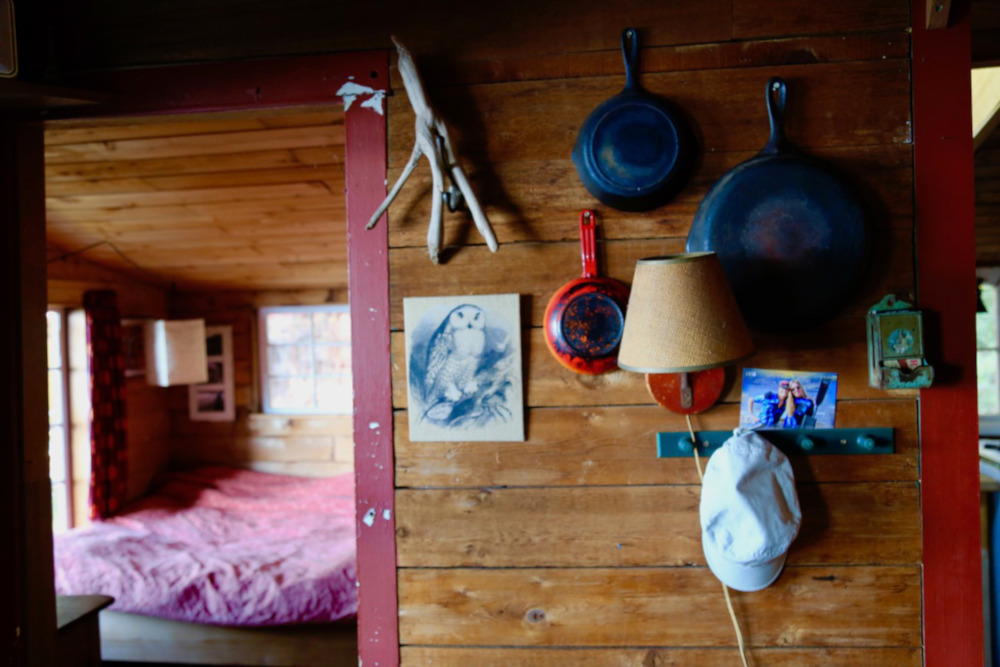












Tyee Commenting Guidelines
Comments that violate guidelines risk being deleted, and violations may result in a temporary or permanent user ban. Maintain the spirit of good conversation to stay in the discussion.
*Please note The Tyee is not a forum for spreading misinformation about COVID-19, denying its existence or minimizing its risk to public health.
Do:
Do not: